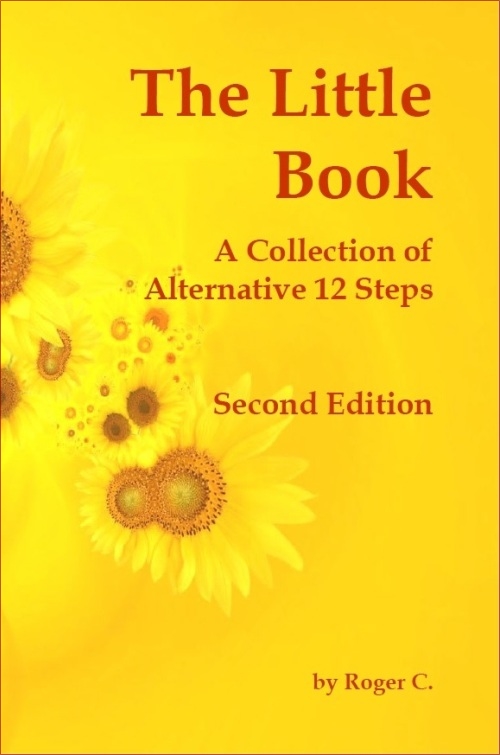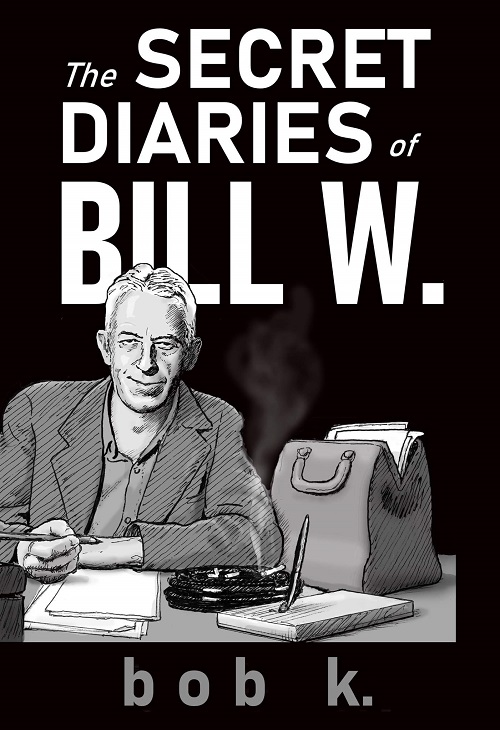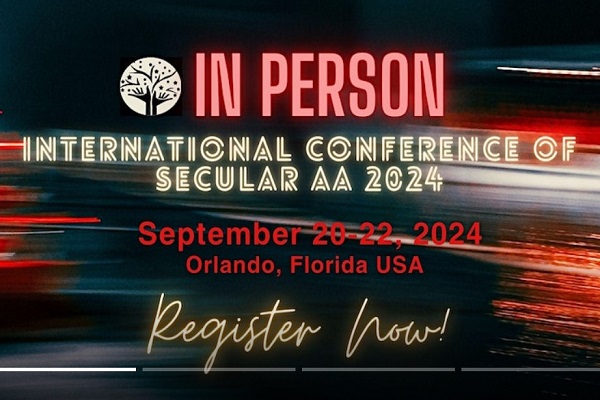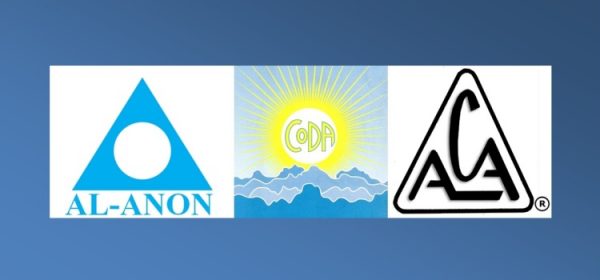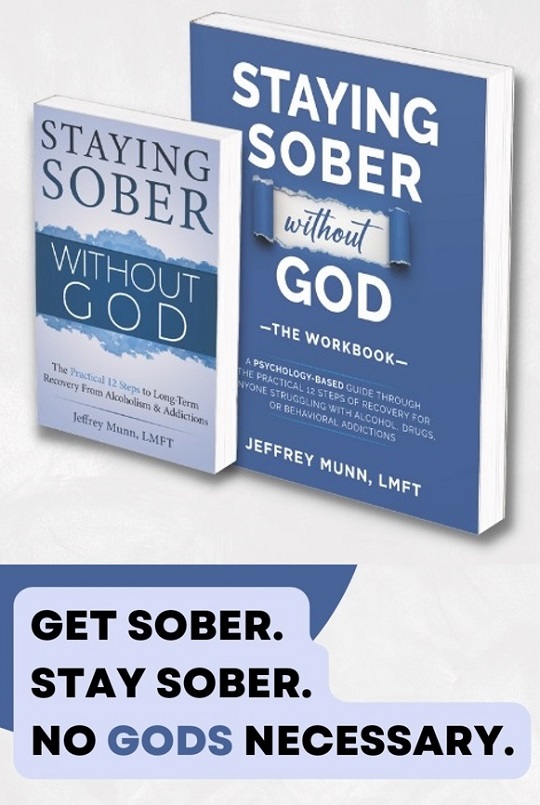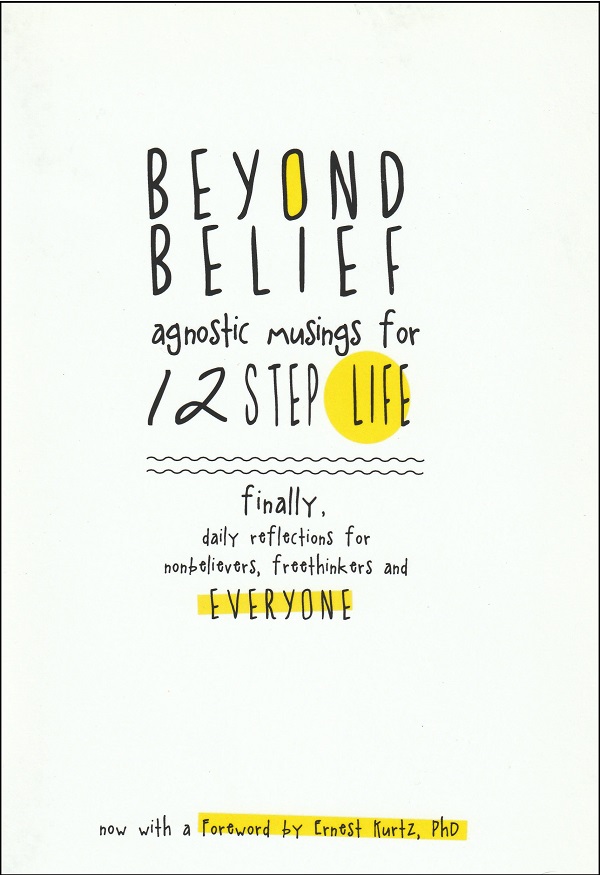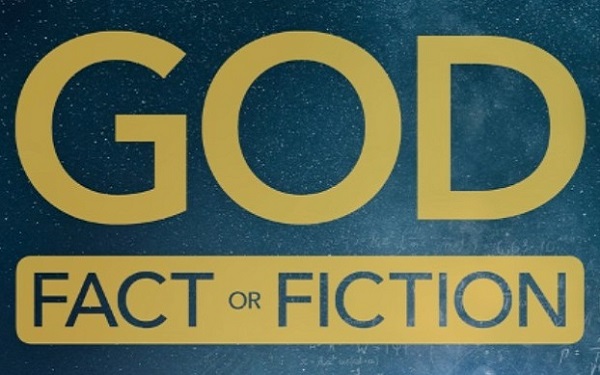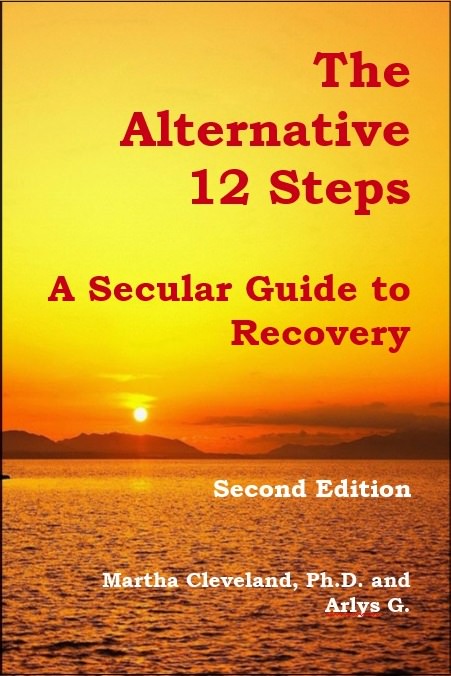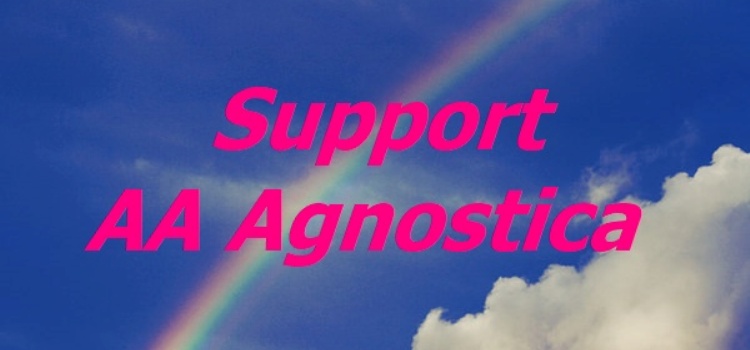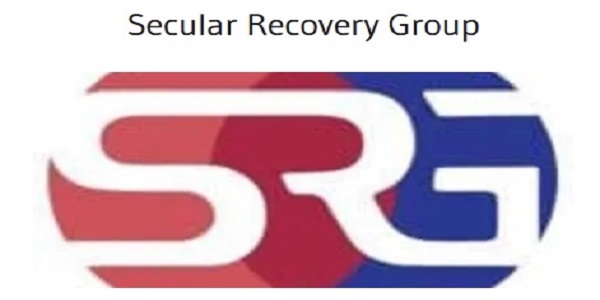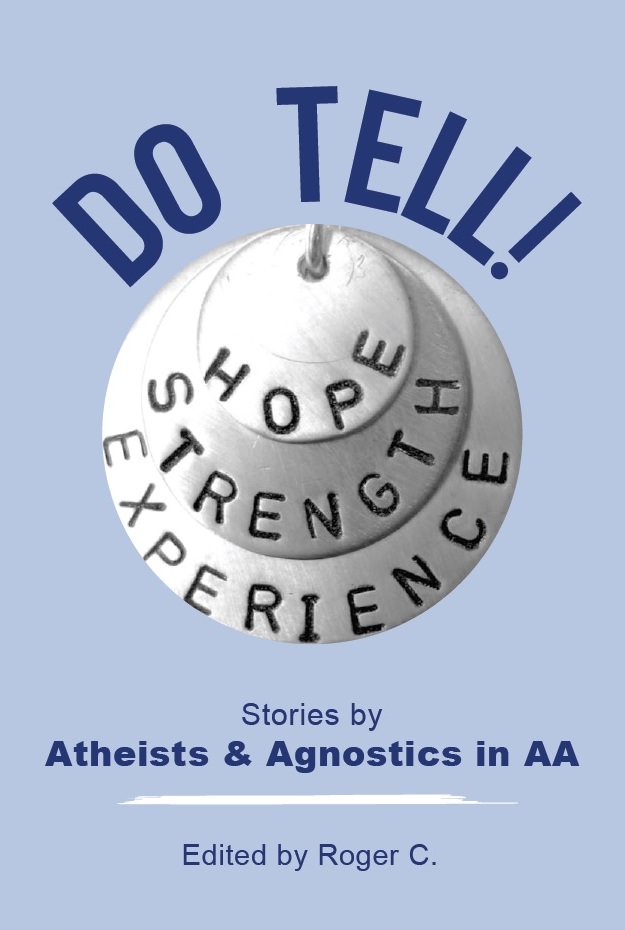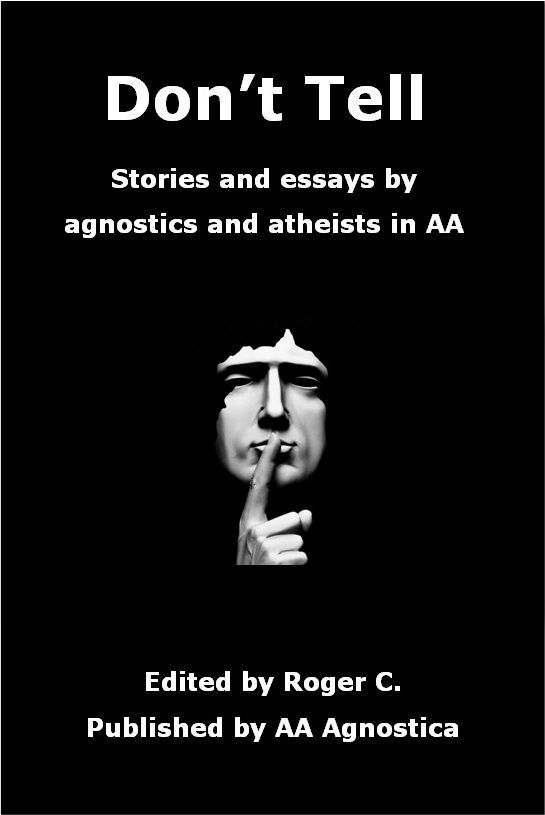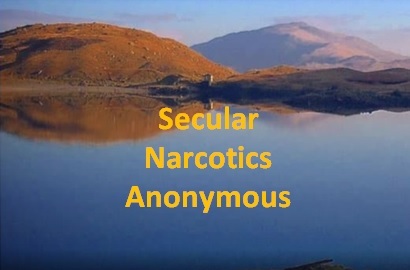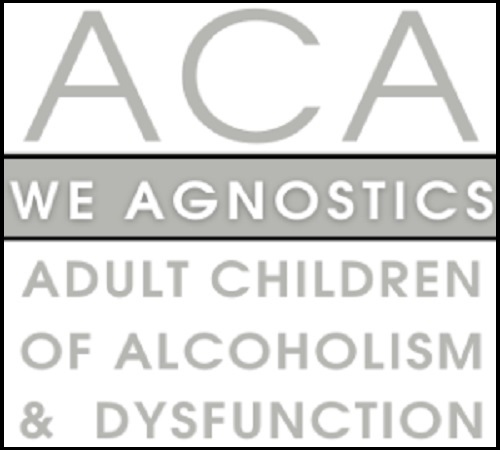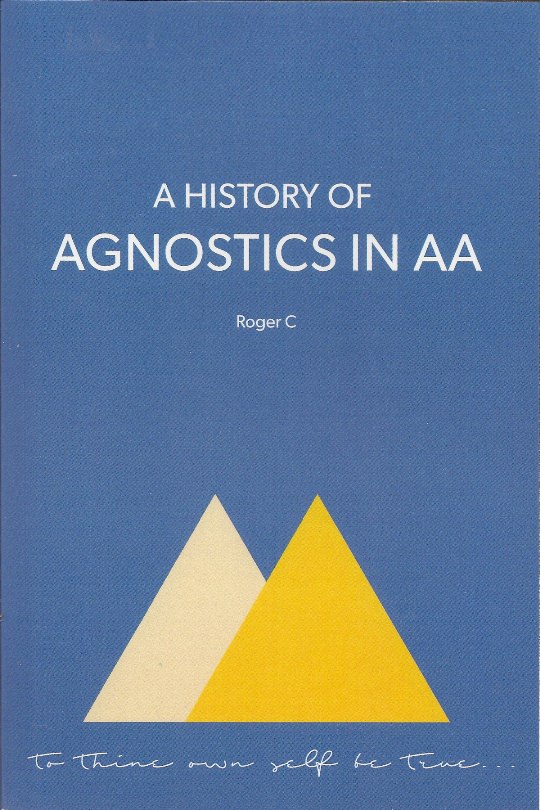Atheists in AA – How it Works

Roger C gave a talk in Kansas City on Saturday, August 6, 2016 – two agnostic AA groups were celebrating their anniversaries – and what follows is a mildly edited version of Roger’s talk at that very special event. You can listen to a podcast of the talk here: A History of Secularism in AA.
By Roger C.
What is AA?
I want to start with a quote by Bill Wilson, from a speech he delivered in New York City in 1965. It is my understanding of AA. Here it is:
In AA we are supposed to be bound together in the kinship of a universal suffering. Therefore the full liberty to practice any creed or principle or therapy should be a first consideration. Hence let us not pressure anyone with individual or even collective views. Let us instead accord to each other the respect that is due to every human being as he tries to make his way towards the light. Let us always try to be inclusive rather than exclusive. Let us remember that each alcoholic among us is a member of AA, so long as he or she so declares.
So now you understand perfectly how I think about AA and that will perhaps illuminate what follows…
Rejection, Creed and Dogma
Rejection. We start today with the feeling of rejection, of being rejected. Have any of you reading this ever felt rejected? You know, rejected by a lover, a friend? A wife? A husband? Rejected for a job that you think was made just for you? Thrown out of a house? A relationship? Trashed? Insulted? Abandoned?
On Tuesday, May 31, 2011, two agnostic groups were booted out of the Greater Toronto Intergroup. Thrown out. Rejected. Trashed.
That’s where, today, the story begins.
The next day, on Wednesday, I emailed the Toronto Star newspaper and later that day talked to a reporter, Leslie Scrivener. Later that weekend an article appeared on the front page of the Toronto Star. On the very top of the front page: Does religion belong at AA? Fight over ‘God’ splits Toronto AA groups.
On Thursday, I went to the evening meeting of my home group Beyond Belief, the first agnostic group ever in Canada, founded on September 24, 2009, and one of the two groups booted out of the Greater Toronto Area Intergroup (GTAI).
There were, as per usual, some twenty people present. They were, to put it mildly, broken hearted. There was a fear in the room that the group and the meeting were as good as dead. If it did not die immediately it would wither away over time. After all, we were not now on any lists. We were rejected. “Where will I go?” “But I love this meeting!” “They hate us.” “What am I going to do now?” That was the mood as I entered the room.
Some were crying. One of them was a wonderfully talented Canadian actress. I had sat beside her and chatted with her at her first Beyond Belief meeting, some six months earlier. After that first meeting she had given me a big hug and told me, “Roger I have a new home!” Now her head was on the table and she sobbed uncontrollably.
So, what’s it all about, dear friends? Why did they do it? Why did Intergroup boot the two agnostic groups out?
The answer is really very simple: creed. Creed and dogma.
Legal action has been taken in Toronto against Intergroup. The issue was taken to the Human Rights Tribunal of Ontario. Founded in 1986, here is a principle defended by the Tribunal:
Every person has the right to be free from discriminatory or harassing behaviour that is based on religion or which arises because the person who is the target of the behaviour does not share the same faith. This principle extends to situations where the person who is the target of such behaviour has no religious beliefs whatsoever, including atheists and agnostics who may, in these circumstances, benefit from the protection set out in the Code.
In a Interim Decision published on February 17th of this year, the Ontario Human Rights Tribunal wrote:
The GTAI (Greater Toronto Area Intergroup) submits that evidence indicates that its purpose is to practice the 12 steps and practice a belief in God. In order to be a part of GTAI, a group must be prepared to practice the 12 steps and thus the members of the group must have a belief in God.
Of course if you believe that is the definition of AA, and that AA was never meant for nonbelievers, what Intergroup did makes perfect sense. Its decision is beyond reproach.
Forget about the fact that the 12 step program is only “suggested”. Forget about Tradition Three. Throw the Responsibility Declaration out with the atheists and agnostics.
In 1961, in an article in the Grapevine, Bill Wilson wrote:
In AA’s first years I all but ruined the whole undertaking… God as I understood Him had to be for everybody. Sometimes my aggression was subtle and sometimes it was crude. But either way it was damaging – perhaps fatally so – to numbers of nonbelievers.
“Perhaps fatally so.” I know, as many others do, that it not a question of “perhaps”.
History
When the two groups were booted out, two things happened.
First, I decided to do a bit of research and write an essay called, A History of Agnostic Groups in AA. I thought it would take me a weekend, a long weekend at most. There would be plenty of information on the Internet.
But there was nothing! I phoned the Chief Archivist at the AA General Service Office in New York. Michelle Mirza was very cooperative. But she too had nothing. She couldn’t help me either. So I hunkered down and worked on it, literally, for months, from June until September. While doing this research I came to meet Ernie Kurtz, the author of Not-God: A History of Alcoholics Anonymous. Ernie was fascinated by my efforts to write this piece. He had been a priest; he was an alcoholic in recovery, and he was the author of a book that is a must-read for anyone interested in the origins and history of our fellowship. Ernie made me feel that my efforts were entirely legitimate and useful or, quite frankly, I probably never would have completed “A History of Agnostic Groups in AA”.
Much of what follows had its origins in that work.
Second, I started the website “AA Toronto Agnostics”. At first it was meant to just list the times and locations of our agnostic meetings, but very quickly it became much more than that. After six months, it was renamed “AA Agnostica”, and ended up publishing articles by men and women from around the world. These were posted on Sundays but sometimes on Wednesdays as well. Started in mid-June, 2011, AA Agnostica posted 360 articles by 169 authors over a period of exactly five years, ending in June of this year, 2016. It contains a large number of truly great articles. Well worth scanning the site for articles about the wisdom – the experience, strength and hope – of we agnostics in AA.
Okay, now let’s go back, way, way back, and look at some of the secular parts of the history of Alcoholics Anonymous.
Jim Burwell
Let me start with Jim Burwell. Jim was a member of one of the first two groups of AA. He was a member of the group in New York that met at Bill Wilson’s house and he was anti-religious in a ferocious kind of way. So much so that members of his group were hoping he would either get drunk or go away.
Jim was part of a big battle which took place in 1939 over Alcoholics Anonymous, the Big Book. Thanks to Jim, two key changes were made: First, the word “God” was changed to “God as we understood Him” in two of the 12 Steps.
Second, and most importantly, the word “suggested” was added to the phrase: “Here are the steps we took, which are ‘suggested’ as a program of recovery.”
I can’t even begin to explain how important that word has been over the years.
And of course, Jim is credited with Tradition Three: “The only requirement for AA membership is a desire to stop drinking”.
Over the years he was a very important part of AA and started a number of groups and meetings across the United States always remaining, if you will, faithful to his lack of faith. It speaks to the nature of the fellowship in its early days that his membership was never – ever – questioned.
That was our friend, Jim Burwell.
Quad A
So now let me start with the first meeting, the first secular AA meeting. It took place forty years after the origins of AA in 1935. It took place in 1975 in Chicago.
And it was founded by a guy by the name of Wilson, but not Bill, Don Wilson. In the early sixties he had tried AA and he had attended meetings for six months but left, put off by the religiosity. “I was unable to work it,” he said, “because of the religious language in which the 12 steps are couched.” He came back a decade later. His drinking had almost killed him.
This time he decided he had to tough it out no matter how hard. Some of us may be familiar with that. After about four years of sobriety, in the autumn of 1974, he gave a talk at a Unitarian Church, “An Agnostic in AA: How It Works for Me”. The talk was well received and he ended up delivering it in several Unitarian Universalist churches and in fact one of the ministers encouraged him to start an AA meeting for atheists and agnostics.
The first ever meeting in AA explicitly for nonbelievers was held on January 7, 1975.
In Chicago. In a church.
The name of the meeting was “Alcoholics Anonymous for Atheists and Agnostics” which was very quickly shortened to “Quad A”. And Quad A has had a hugely interesting history in Chicago.
In 1995 an article was written about it in The Chicago Tribune while Quad A was celebrating its twentieth anniversary. It’s a wonderful article. It’s kind of the equivalent of the Jack Alexander article published in The Saturday Evening Post in 1941 only this one is for we agnostics in AA and it’s called A Different Road. It begins like this:
Six o’clock Saturday night and the drunks are having a party. This is news? It is when the party is in Chicago’s Second Unitarian Church on Barry Street. The drunks are sober, and the party is to commemorate the 20th anniversary of a controversial 12-step recovery group – Alcoholics Anonymous (AA) for Atheists and Agnostics, known in AA circles as Quad A (AAAA).
Today Quad A is going strong. There are twelve meetings in Chicagoland. They are listed by the Chicago Intergroup in fact and one of the search options when you are looking for a meeting on the Chicagoland Intergroup site is called “Atheist / Agnostic”. So you can actually look for those secular meetings in Chicago.
And there is something else I want to mention.
We generally get the impression that Santa Monica in 2014 was the first Convention or the first collective gathering of agnostics in AA. That’s the rumour. But it’s wrong. On September 13, 2009, a Quad A Unity Conference was held and it was called “Beyond Alcohol and Addiction: Sobriety, Sanity and Serenity”. And over a hundred people attended it. It came with a sixteen page leaflet which contained the Conference schedule which included a number of terrific speakers. It included an article about “A Man of Distinction”, Don Wilson, who started the first group. It contained a copy of the 1995 article written in the Chicago Tribune called “A Different Road”. It also contained several versions of secular Steps and in the end it described AA in eight words, which is like four times two words. The first two words being “Quit Drinking”. The second two words “Trust AA”. The third two words “Clean House”. And the last two words “Help Others”. A pretty simple understanding of AA.
We Agnostics
So that was the first agnostic meeting, in Chicago, January 7, 1975. It would take five years for the next group of meetings to start. And that happened in California, in Los Angeles, and it happened because of a wonderful guy by the name of Charlie Polachek.
If you want to read about Charlie, there is an article on AA Agnostica called Father of We Agnostics Dies.
I talked to Charlie on the phone. He died at the age of 98. He told me, he was about 96 or 97 at the time, very proud, he says, “I am the daddy of We Agnostic groups!” Because he started the first group ever called We Agnostics, in 1980, in Hollywood in Los Angeles.
When I talked to Charlie, he was quite surprised. I told him that I was writing an article “A History of Agnostic Groups in AA” and his response was “Really!” It was so exciting to him that we go public on this. It was so exhilarating to him that this would cease to be a secret within AA. Charlie described himself as both an atheist and a number of people I talked to described him as one of the most spiritual human beings they had ever met. I contacted his daughter Angeliska and shortly after his death – and I’m throwing this in because I just like it – she did a post online and talked about Charlie’s favourite haiku and it goes like this: “In the midst of a meadow / a skylark singing / free from everything”. I like haikus.
Around the year 2000 Charlie moved to Austin, Texas, where he again started a meeting called We Agnostics. He became friends with Nick H. who then started the second meeting for agnostics and atheists in Austin called “Children of Chaos”. Nick is the chair of the host committee that is organizing a Convention for we agnostics, atheists and freethinkers in AA which is to be held, of course, in Austin in November of this year.
I will note as well that Intergroup for Austin – Hill County, it’s called – also lists “Atheist / Agnostic” as a “meeting type”. So if you are looking for a meeting for atheists and agnostics in Austin there is a category called “Atheists / Agnostics” that you can click on.
By the way, the meeting that Charlie started in Hollywood in 1980 still meets every Tuesday and it’s going strong. AA and agnostic AA flourished in California in ways that it didn’t flourish in other areas.
New York
So now I would like to talk about New York. Because we had these meetings in Chicago and we had these meetings in California but there was nothing in New York, strangely enough.
A guy by the name of Harry, a Californian, placed an ad in “Free Enquiry”. It’s a magazine that continues to exist today, and it’s published for atheists and agnostics. So Harry wrote this little ad in Free Enquiry, an ad addressed to atheist and agnostic members of AA who were having trouble with the religious nature of many AA meetings.
So Harry did this ad. And three people in New York answered it. They sent a little letter to Harry. They didn’t know each other but these three people from New York responded to Harry’s ad.
Harry wrote back and explained how the agnostic meetings work, the formats and all that stuff, and then he connected them together. They are Ada H., John Y. and David L. The first meeting was held at Ada’s home on September 10, 1986. It was called We Atheists. It eventually moved to the Jan Hus Church where it still meets today and the name was changed to We Humanists. The three, Ada, John and David, met together for over a decade. For over a decade they went to these meetings together. Thank you Harry, in California.
David eventually moved to Pittsburgh. John Y. died on March 10, 2003. He was a co-founder of the Secular Humanist Society of New York City, a life-long resident of the Bronx and a veteran of World War II. Born in 1921, he got sober in 1962. Ada died in August, 2005, at the age of 83. She had more than 30 years of sobriety. She was a very passionate woman, a socialist and a very wealthy New Yorker. On her tombstone it says that Ada “started an Alcoholics Anonymous meeting for Atheists and Agnostics”.
Today, there are sixteen meetings in New York City for agnostics, atheists and freethinkers in AA. Under the search again for meetings there is something called a “special interest” category where you can click on “Agnostic” and again find these meetings.
The Failure of AA
The next section of this article is called “The Failure of AA”. Please don’t be disturbed by the word “failure”. Every organization, every person, experiences failure. Indeed, failure has been a big part of my own life, especially when I was a drinking alcoholic. “Failure” should not ever kill our hope for, well, “success” and growth in the future.
As far as I can understand it, AA stopped growing as a fellowship sometime in the mid seventies. After that, it started to become more religious, much more dogmatic. In the mid-seventies, it published two significant documents. One was the book, Living Sober, first printed in 1975. It is a great, mostly secular, book. The other was the pamphlet, “Do you think you are different?” published in 1976. It contains one article by an atheist and another by a self-described agnostic.
And that’s it, that’s all. Nothing supportive or even sympathetic has been written or published by or for a nonbeliever in AA ever since.
And it’s not just in the support of non-Christian alcoholics that AA has failed. As a fellowship devoted to helping alcoholics it has failed to keep up with science, and its understanding of the causes of and treatments for alcohol abuse. Again, in 1965 Bill Wilson said ““Research has already come up with significant and helpful findings. And research will do far more.”
And it has! But you wouldn’t know that if your sole source was AA.
But back to our agnostic AA members.
Back in 1976, a sub-committee of the AA Literature committee recommended that AA compile and write “a pamphlet for the Agnostic and/or Atheist.” In a report presented to the full Literature committee in July, they wrote that such a pamphlet “is needed to assure non-believers that they are not merely deviants, but full, participating members in the AA Fellowship without qualification.”
The Literature Committee decided not to recommend such a pamphlet to the 1977 General Service Conference.
And on and on it goes.
In 1982, the Literature Committee again declined to pursue a pamphlet for nonbelievers in AA.
In 1996 the idea of such a pamphlet made it to the Conference but was rejected by the Conference Literature Committee.
The trustees’ Literature Committee received a request from We Agnostics Group in New York in July 1997, asking that the committee consider publishing a pamphlet titled “AA is Not a Religion.” The Committee declined to pursue this pamphlet.
A similar proposal was rejected at the 2001 Conference.
And on and on it goes.
So what is it that’s going on?
It’s called dogma, my friends. Creed and dogma.
Let’s go back to the Greater Toronto Area Intergroup.
In a document released on May 16 of this year, in response to the Interim Decision of the Human Rights Tribunal of Ontario, the GTAI argues that even though the Steps are a “suggested” program, they are the only program in AA and must be followed by every group within the GTA. Not afraid to describe this belief as its creed, the GTAI goes on to insist the twelve steps must be followed exactly as written. Otherwise the group will be excommunicated. I mean, expulsed.
Now not even the author of the steps believed that. In AA Comes of Age, he wrote:
We must remember that AA’s Steps are suggestions only. A belief in them as they stand is not at all a requirement for membership among us. This liberty has made AA available to thousands who never would have tried at all, had we insisted on the Twelve Steps just as written.
You would think that would mean something to the GTAI. But apparently not.
Bill saw it coming. He saw an AA that was becoming increasing dogmatic. Again, from the speech he gave to the General Service Conference in New York in 1965, here is Bill Wilson: “It is a historical fact,” he said, “that practically all groupings of men and women tend to become dogmatic. Their beliefs and practices harden and sometimes freeze.”
He continued, “Simply because we have convictions that work very well for us, it becomes quite easy to assume that we have all of the truth. Whenever this brand of arrogance develops,” he warned, “we are sure to become aggressive. We demand agreement with us. We play God.”
The Greater Toronto Area Intergroup loves playing God.
“This isn’t good dogma,” Bill continued. This is very bad dogma. It could be especially destructive for us of AA to indulge in this sort of thing.”
Ya think?
Now, I want to make something clear. We all have beliefs. There are no exceptions. I have my own beliefs. What is wrong is forcing our views on other people. What is wrong is not permitting others to own and voice their own convictions.
Bill Wilson understood that too: “All people must necessarily rally to the call of their own particular convictions and we of AA are no exception.” Moreover, he continued, “all people should have the right to voice their convictions.”
Pretty simple stuff, you would think.
Moving Forward
Now I want to talk about moving forward.
And the first thing I want to talk about is literature. We agnostics and atheists in AA have made such enormous progress in so many ways, and certainly this is one of them.
But I am going to limit myself to talking about just two books.
I have a friend you may have heard of, Joe C. He was one of the people who started Beyond Belief in Toronto, the first agnostic meeting in Canada. That’s was my home group, until I started the We Agnostic group in Hamilton, Ontario. In 2013 Joe and I were in an incredible competition. He was working to publish Beyond Belief: Agnostic Musings for 12 Step Life and I was trying to publish The Little Book: A Collection of Alternative 12 Steps. He beat me, by about two weeks. Beyond Belief has turned out to be hugely helpful. It’s a book of daily reflections. I know a number of groups across the world that use it, who will read the daily reflection, and then have a discussion at their meeting following that reading. So it’s a very, very popular book.
The Little Book just came to be. Gabe S. in England had a collection of alternative 12 Steps and he sent them to me and I thought, what an interesting idea: a collection of alternative 12 Steps. At AA Agnostica we started looking online for secular interpretations of the 12 Steps and found some terrific versions. And then we added a Part II: four very concise secular interpretations of each of the Steps by famous authors such as Stephanie Covington, author of A Woman’s Way Through the Twelve Steps, and Gabor Mate who had written In The Realm of Hungry Ghosts. And then I wrote a Part III: The Origins of the 12 Steps and, we published it!
I love the book. I had to mention it today because, for groups like the GTA Intergroup, it’s heresy. Pure heresy.
And for everybody else it is diverse, gender respectful, equitable, and, most importantly, on the contemporary side of life. It ain’t 75 years old.
AA Agnostica has published five other books for atheists and agnostics in AA. And of course there have been other books, such as John Lauritsen’s A Freethinker in Alcoholics Anonymous and Marya Hornbacher’s Waiting: A Nonbeliever’s Higher Power.
And I am very proud to announce that AA Agnostica will be publishing another book in the next few months. This one will be by a dear friend sitting in this very room, Thomas Brinson, and it may very well be called Each Breath A Gift: A Memoir with Reflections on a Life of Recovery. Stand up, Thomas.
Thomas has written a number of articles for AA Agnostica and for AA Beyond Belief. He knows of what he speaks and it promises to be a super book.
Websites – spaces for agnostics, atheists and freethinkers in AA. There are all kinds of them.
Rebellion Dogs Publishing. Joe C. manages that website.
There is AA Agnostica which began in 2011 in Toronto when the groups were booted out of the GTA and stopped posting articles regularly on Sundays after five full years, in June of this year. It remains online with a total of 360 excellent articles there for everybody to read.
AA Agnostica was succeeded by AA Beyond Belief, by my good friend John S., who is now doing that website and podcasts. The super editor for articles on AA Beyond Belief is Doris A. You can hear this article as a talk and podcast on AA Beyond Belief right here: Roger C. Speaking at Kansas City Secular AA Celebration.
It’s a terrific website.
Then there are 25 websites for individual or groups of agnostic meetings. So there are all kinds of websites, all kinds of information, for we agnostics and atheists in AA. We are not alone.
Meetings. Let’s talk about meetings.
When a rewrite of the essay, “A History of Agnostic Groups” was completed in August 2012, there was a total of 87 agnostic meetings worldwide listed on the New York website. Today, there are over 300. We’ve added more than two hundred in literally just a few years. We have gone from agnostic meetings in three states to agnostic meetings in 40 states in the U.S. and five provinces in Canada.
In 2011, when they had the boots put to them, there were two meetings for agnostics in AA in the Toronto area. Today, there are thirteen. It’s all so very fantastic.
Conventions and conferences. Well, the first one was in Chicago in 2009 and the second in Santa Monica in November 2014. A superb convention, let me say that once again right now. Then there was a conference in Phoenix, Arizona, in November 2015, and one in Olympia, Washington, in January of this year. And now we are all getting ready for a convention in Austin, Texas, coming up this November.
So there are plenty of reasons to be hopeful. We are going strong my friends. We are with the tide, as it were.
I am very near the end of this article, this talk, now.
And I want to end it references yet again to Bill Wilson’s talk in 1965.
He knew even then that AA was failing people. He knew that some were walking out of AA meetings and never coming back. “Without much doubt, a million alcoholics have approached AA during the last thirty years,” he said. Estimating that “350,000 of us are now recovered from our malady” through the fellowship of AA, he continued, “So we can very soberly ask ourselves what became of the 600,000 who did not stay.”
“How much and how often did we fail them?” he asked.
“Our very first concern should be with those sufferers that we are still unable to reach.”
And he identified those who were being failed: “Newcomers are approaching us at the rate of tens of thousands yearly. They represent almost every belief and attitude imaginable. “We have atheists and agnostics,” he said. “We have people of nearly every race, culture and religion.”
But he thought he might have a solution. A Declaration. Something that everyone would understand: atheists, agnostics, even the dogmatic and religious types. Everybody would understand. He brought that Declaration later in the summer to Toronto. To Maple Leaf Gardens. It was AA’s 30th Anniversary International Convention. Its theme was “Responsibility”. And thus the Responsibility Declaration. A Declaration which everyone should understand as the very mission of Alcoholics Anonymous.
In an extraordinarily moving event after Bill’s speech on July 3, 1965 at Maple Leaf Gardens in downtown Toronto, more than 10,000 delegates, trustees and AA representatives from 21 countries rose to their feet, joined hands and, led by Bill, recited, for the very first time, the brand new AA Responsibility Declaration.
It’s a Declaration that all the agnostic meetings that I know of use at the end of their meetings rather than, say, the Lord’s Prayer. I am sure many of you are familiar with it:
I am responsible. When anyone, anywhere reaches out for help I want the hand of AA always to be there. And for that I am responsible.
That’s AA for we agnostics and atheists. For us, that’s how it works. Thank you all for taking time to read this article. Please feel free to share it.
For a PDF of this talk, click here: Atheists in AA – How it Works.



